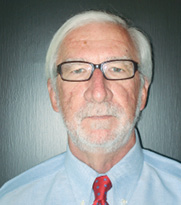Two of the most important responsibilities of an equipment salesperson are to maintain relationships with existing customers while simultaneously securing new customers. One of the primary responsibilities of the dealer/sales manager, therefore, is to see that those responsibilities are done efficiently and effectively. One way of accomplishing this is to establish meaningful territories for each salesperson and to periodically review how each salesperson is performing within that territory.
The following are some of the reasons why sales territories should be clearly defined and delineated:
- They ensure proper coverage.
- They facilitate effective customer contact.
- They increase salespersonnel interest.
- They enable adequate control of salespersonnel activities.
- They simplify salespersonnel comparisons and evaluations.
- They reduce selling costs.
As such, territories can be established in a multitude of ways. First, a dealership could eschew traditional territories by letting their sales force sit inside the dealership waiting for the next victim to walk through the door. While this approach will certainly minimize expenses, it will also do little to cultivate relationships or establish new customers. Dealers who utilize this approach to managing their sales force are likely to be heard importuning their salespersonnel “to just go sell!”
A more viable approach to territorial management would be to assign each salesperson a geographical territory based on given landmarks or highway route numbers. This is a traditional approach to assigning territories and is an effective line of attack provided that the territories are similar in size and that market potential is relatively equal among each salesperson.
Research indicates that the larger the territory, the greater the cherry picking. While many salespersonnel never think they have enough territory, effective salespersonnel focus on the potential that exists within their assigned territory and aggressively pursue those opportunities. Repeatedly contacting customer/prospects within a given geographical territory should enhance customer relations and ultimately lead to higher margins.
Another approach to establishing a sales territory is to do so based on product specialization. Many dealers have undertaken this approach with products such as sprayers. This approach could also be utilized for various other products because of their complexity and sophistication. It is not uncommon to ask salespersonnel to sell the entire line of products, and in some cases, the same product for numerous lines. As a result, the salesperson becomes the proverbial “jack of all trades and master of none.” Not surprisingly, when this occurs, any sales are generally a function of price rather than selling skills.
Several years ago while training personnel for a manufacturing firm whose combine sales represented less than 5% of the industry total, I had the opportunity to spend several hours with their combine specialist who proceeded to tell me how good their product was. At the end of his soliloquy he almost had me convinced that he had the best combine on the market.
Yet as John Adams once stated, “Facts are stubborn things,” and it was hard to rationalize his company’s poor combine sales. I left that training session believing that if that company could clone this individual, or if they could hire and train several product specialists to help their dealer organization sell this product, then sales could undoubtedly increase.
The three obvious drawbacks to product specialization territories, however, are multiple salespersonnel calling on the same customer; the increased cost of customer contact; and the potential conflict in compensating salespersonnel.
Another approach to establishing territorial coverage is to focus on the customer. This approach can take the form of either assigning a given number of customers to each salesperson or letting the sales force cherry pick the customers that they want to work with. Concerning the latter approach, I recently analyzed a dealership where the sales force ran the dealership. If a salesperson called on a customer one time 5 years ago, then that customer was his, presumably in perpetuity.
Interestingly, I pulled the expense reports for each salesperson for a given month last year. Not one “customer” was within a 50 mile drive of the dealership and on numerous days all 4 salespersonnel were within the same territory. In this case, the sales force looked upon their mileage allowance as an incentive to drive long distances and dealership expenses be damned. This was a highly inefficient and costly way to contact customers and is more an abdication of sales management responsibility than an effective way to contact the end user.
For my money, a geographical assignment with a selected and minimal number of key account customers in each other’s territory will provide the most efficient and effective method of territorial coverage, while simultaneously enabling management to control and evaluate their sales force performance.







